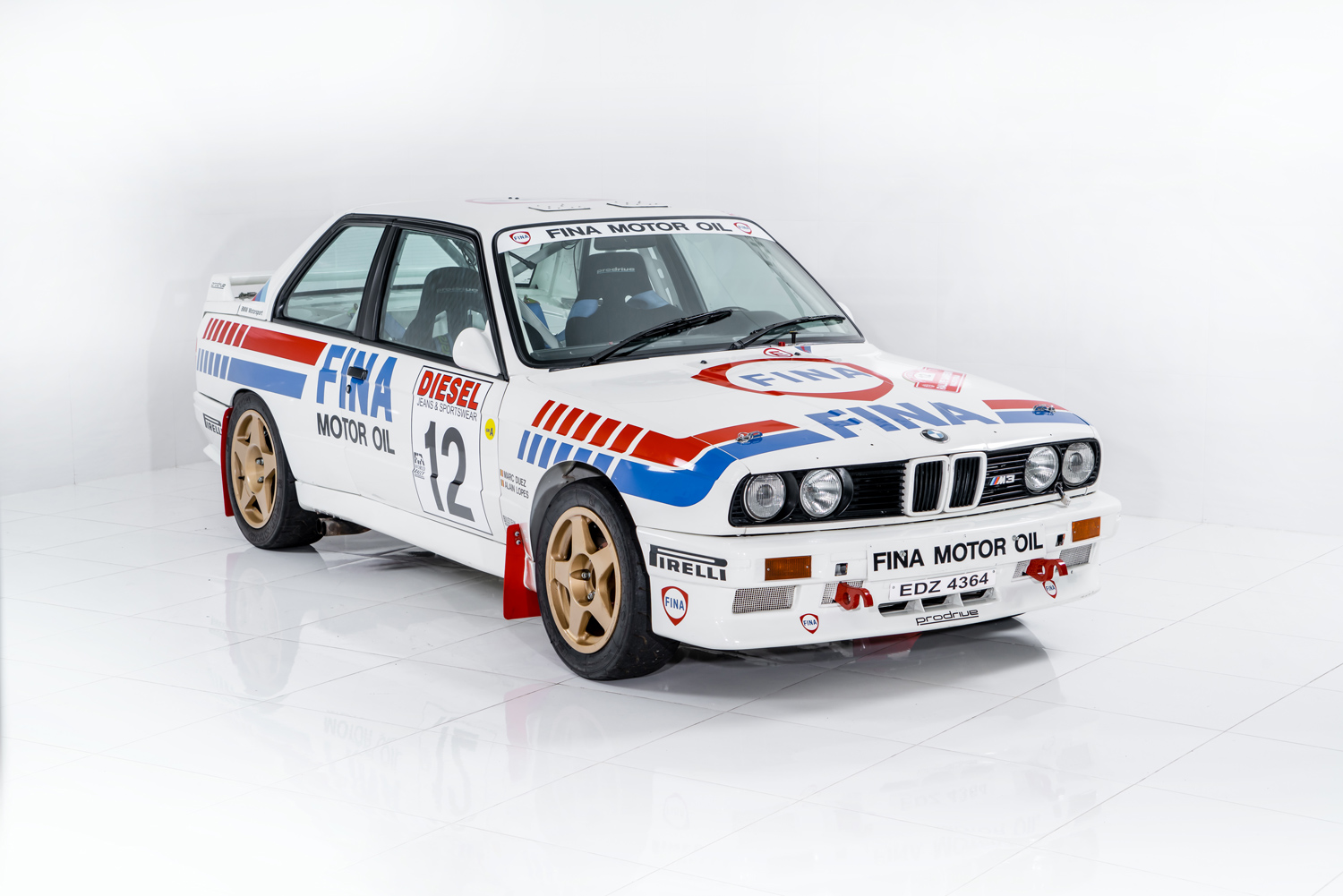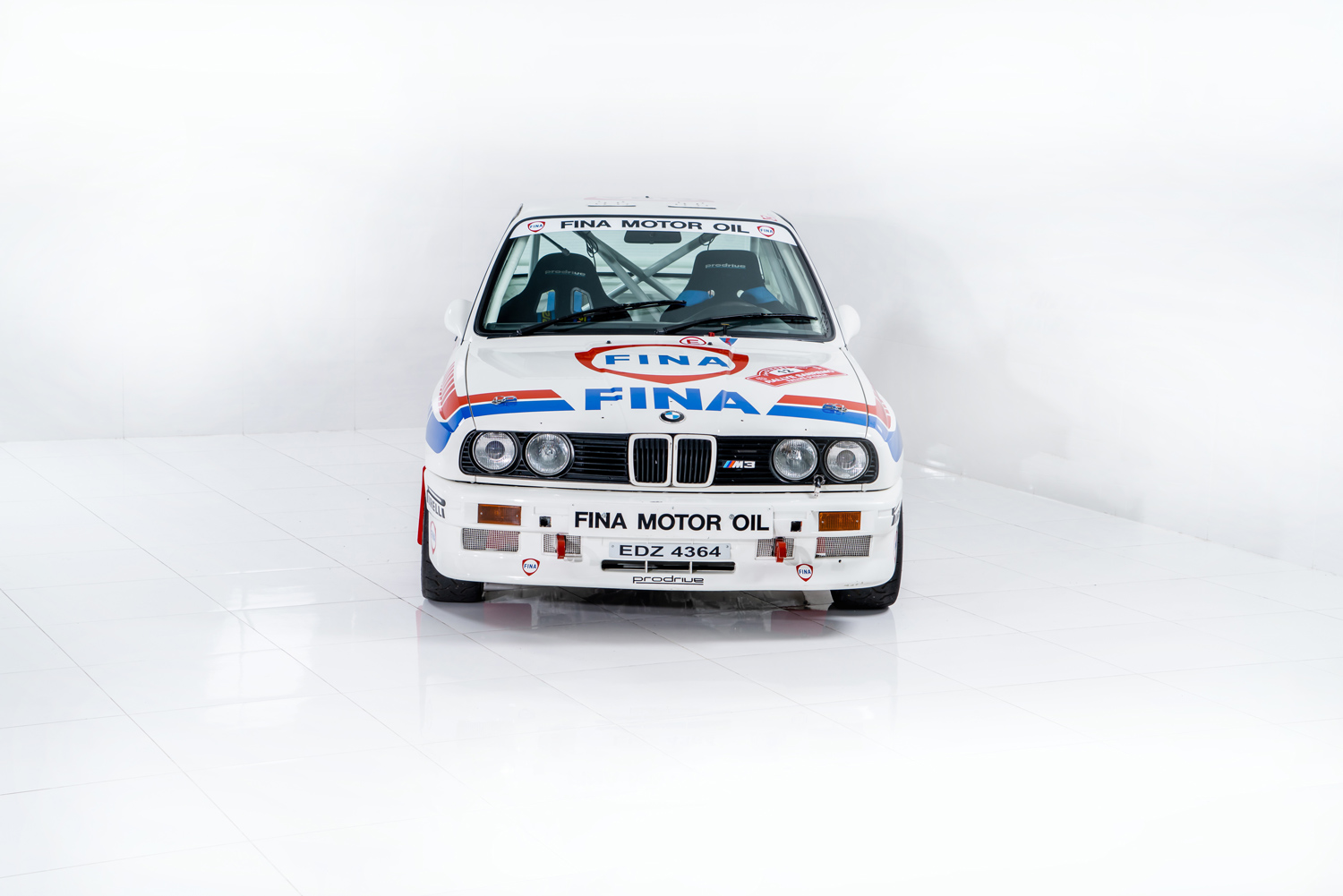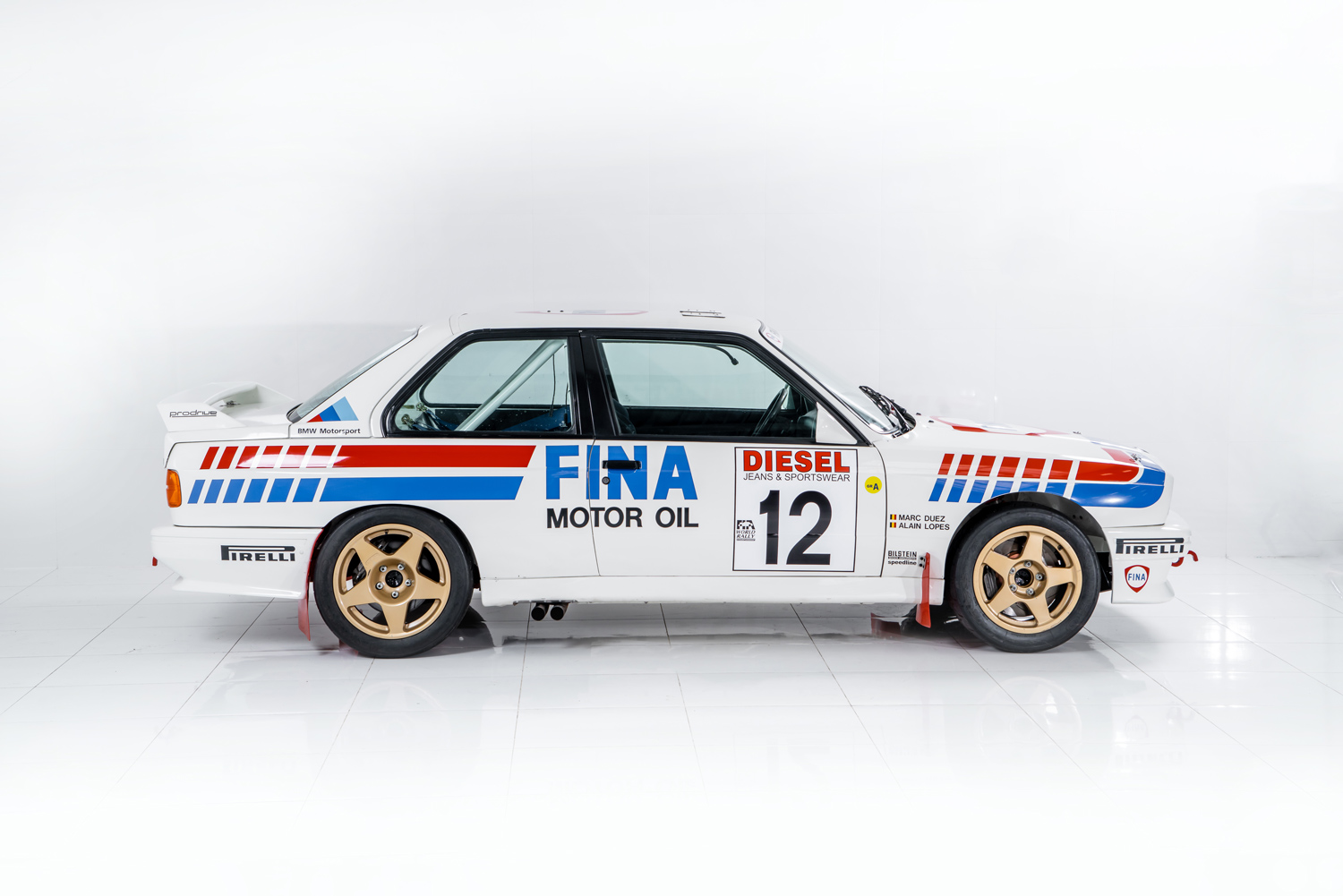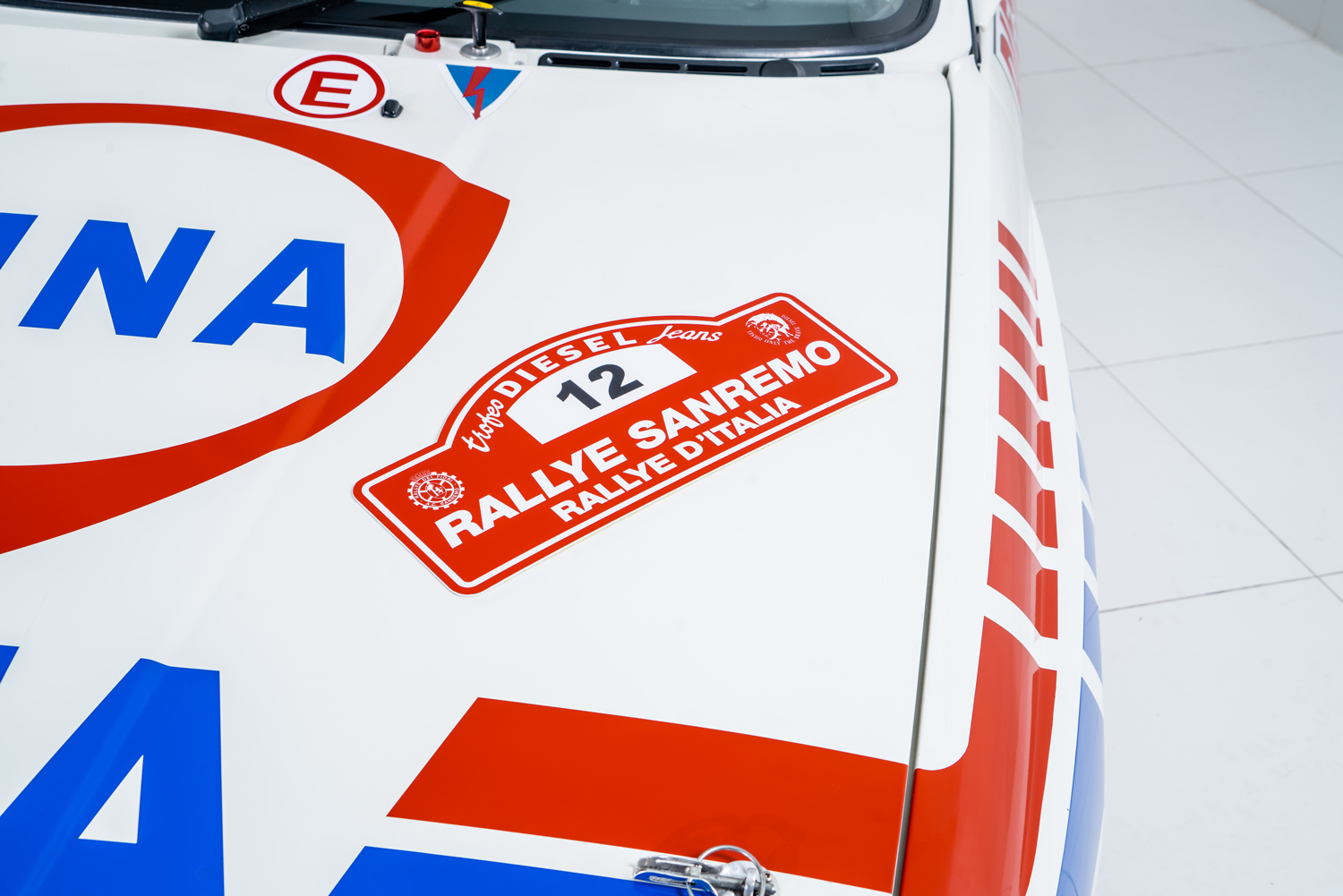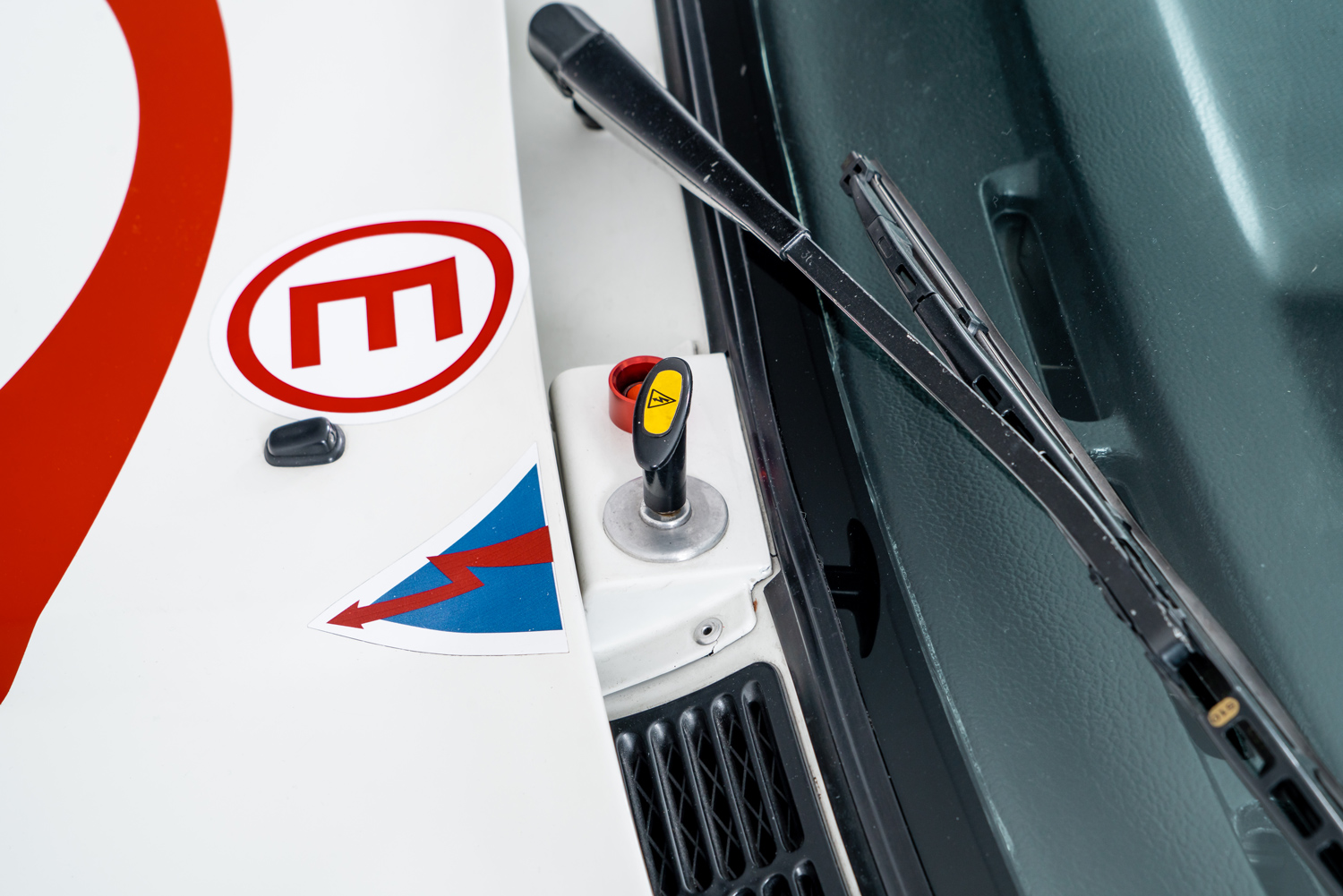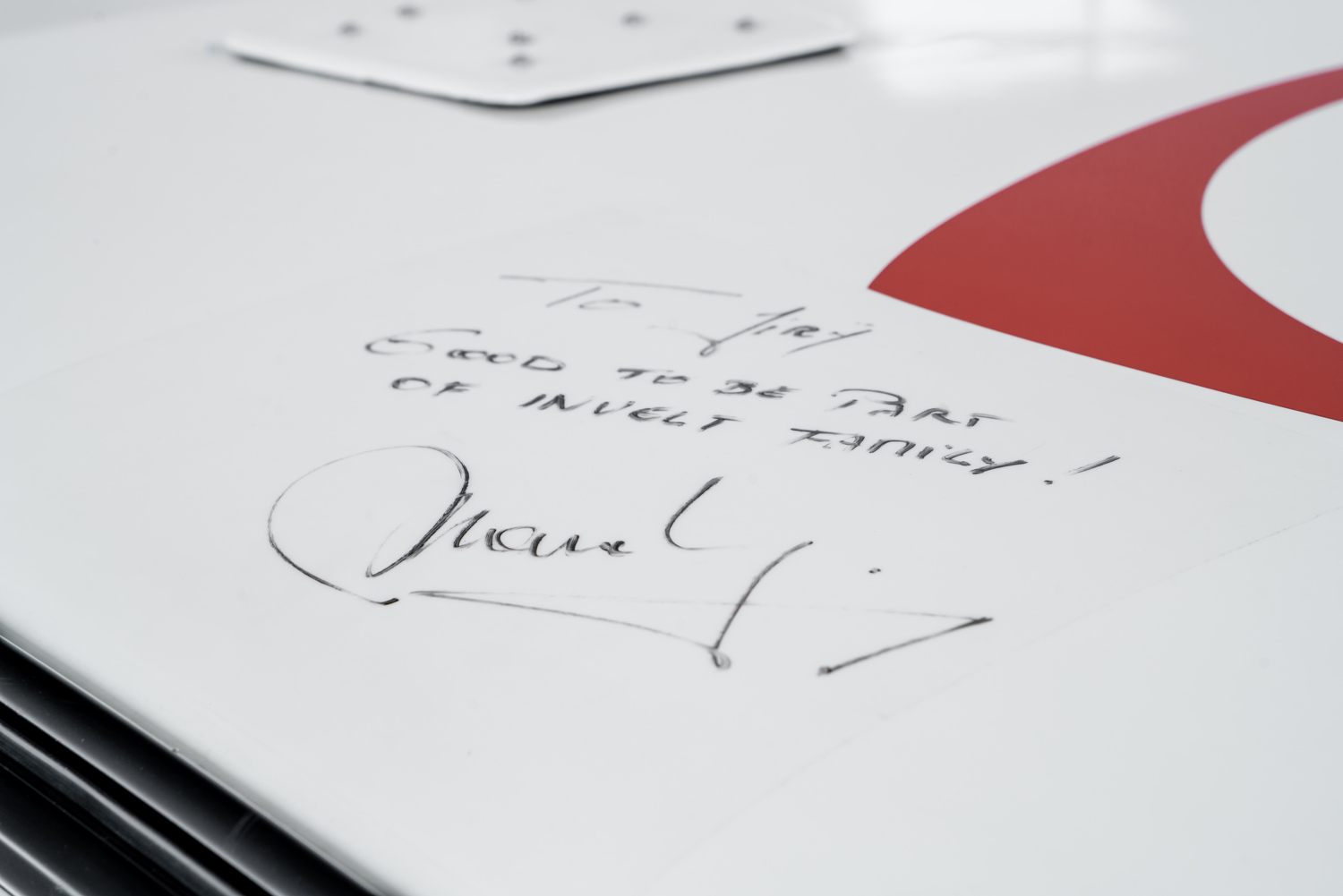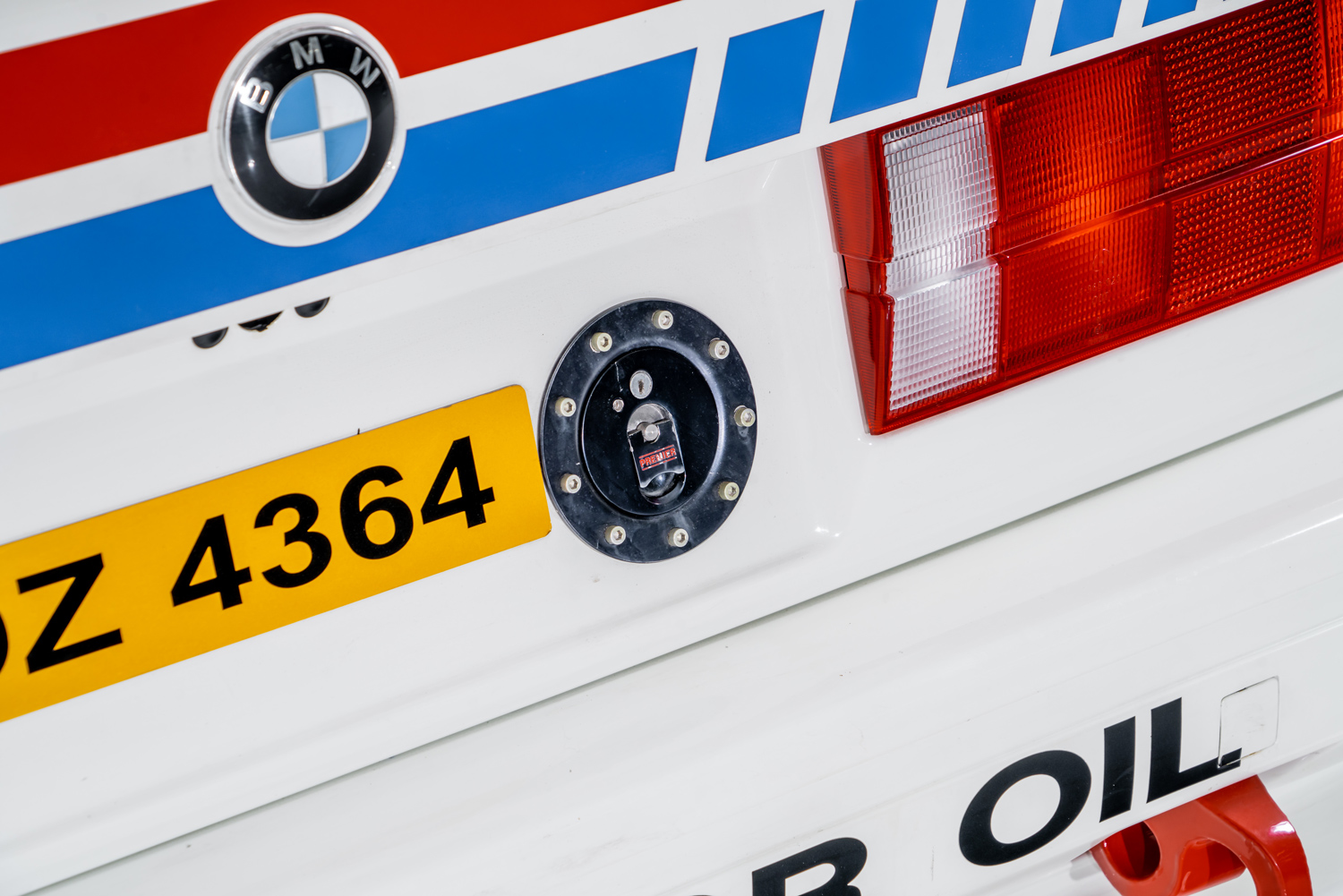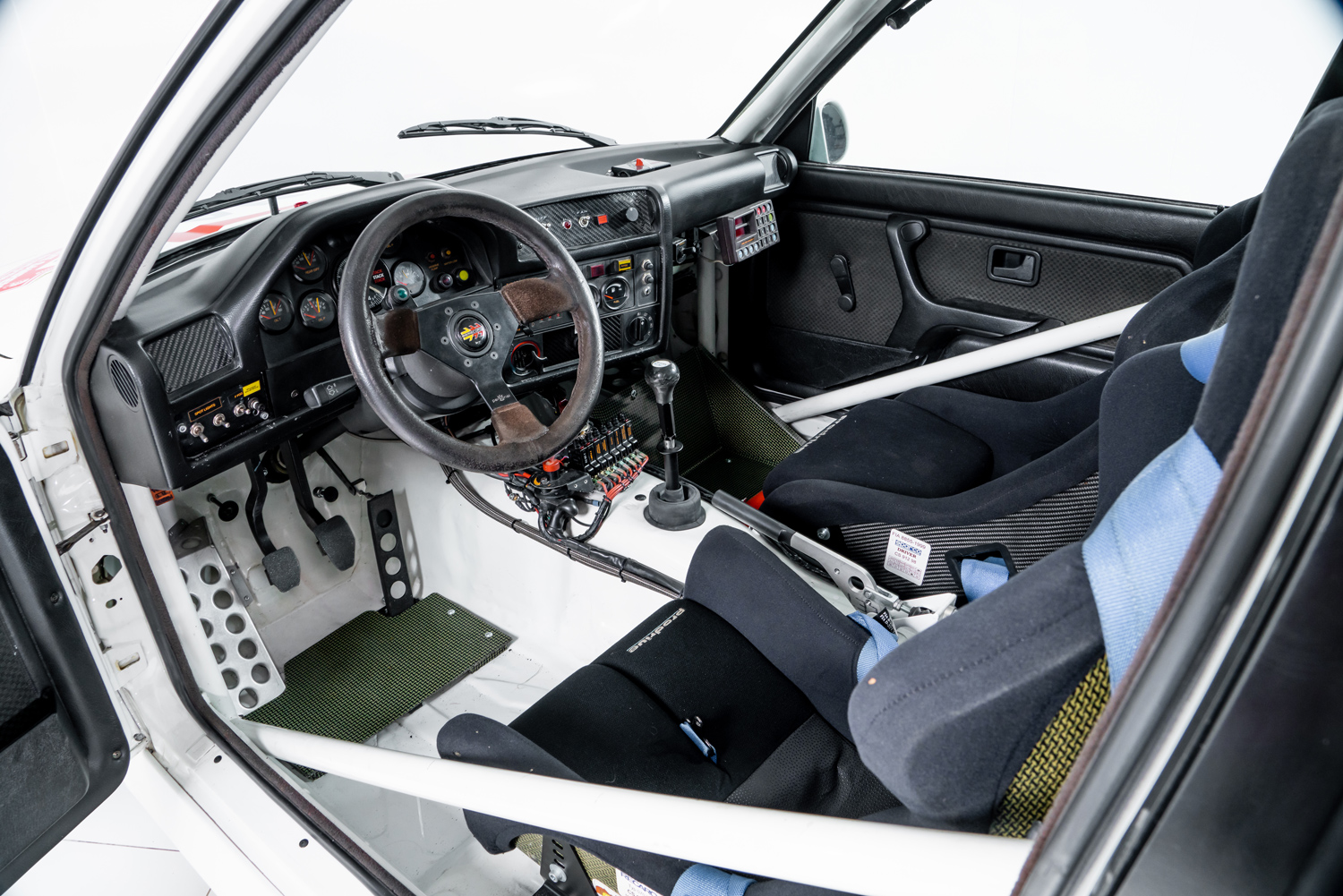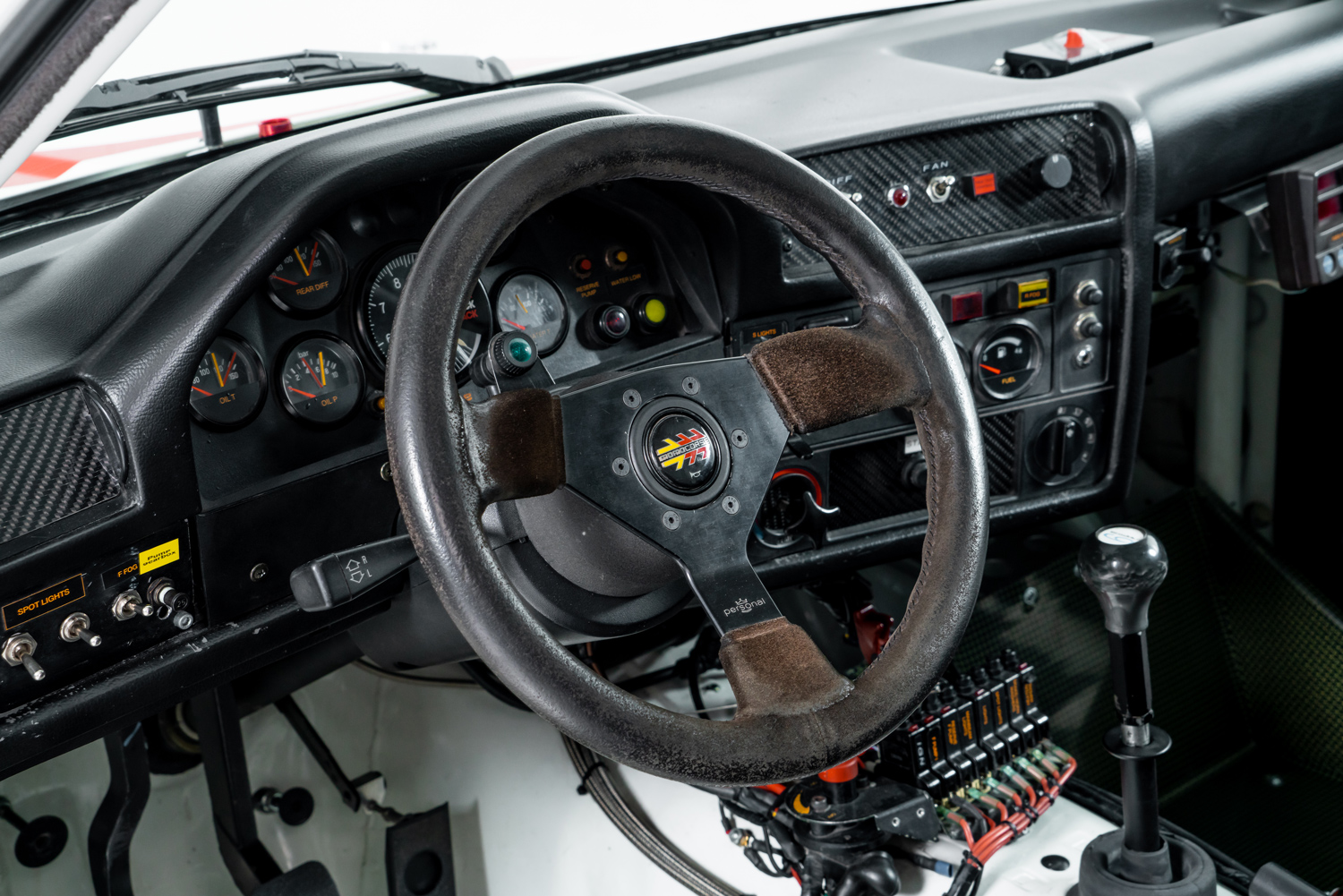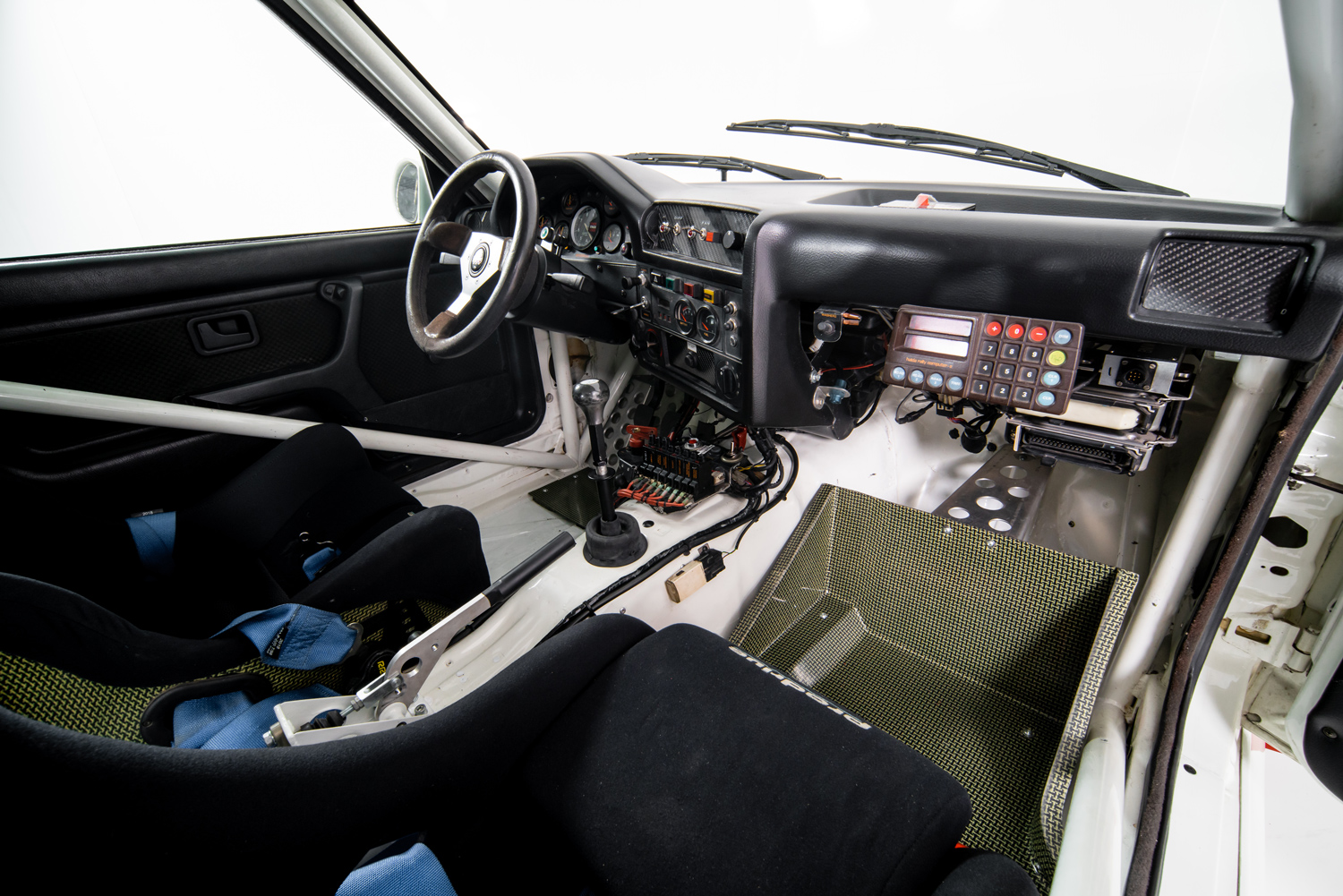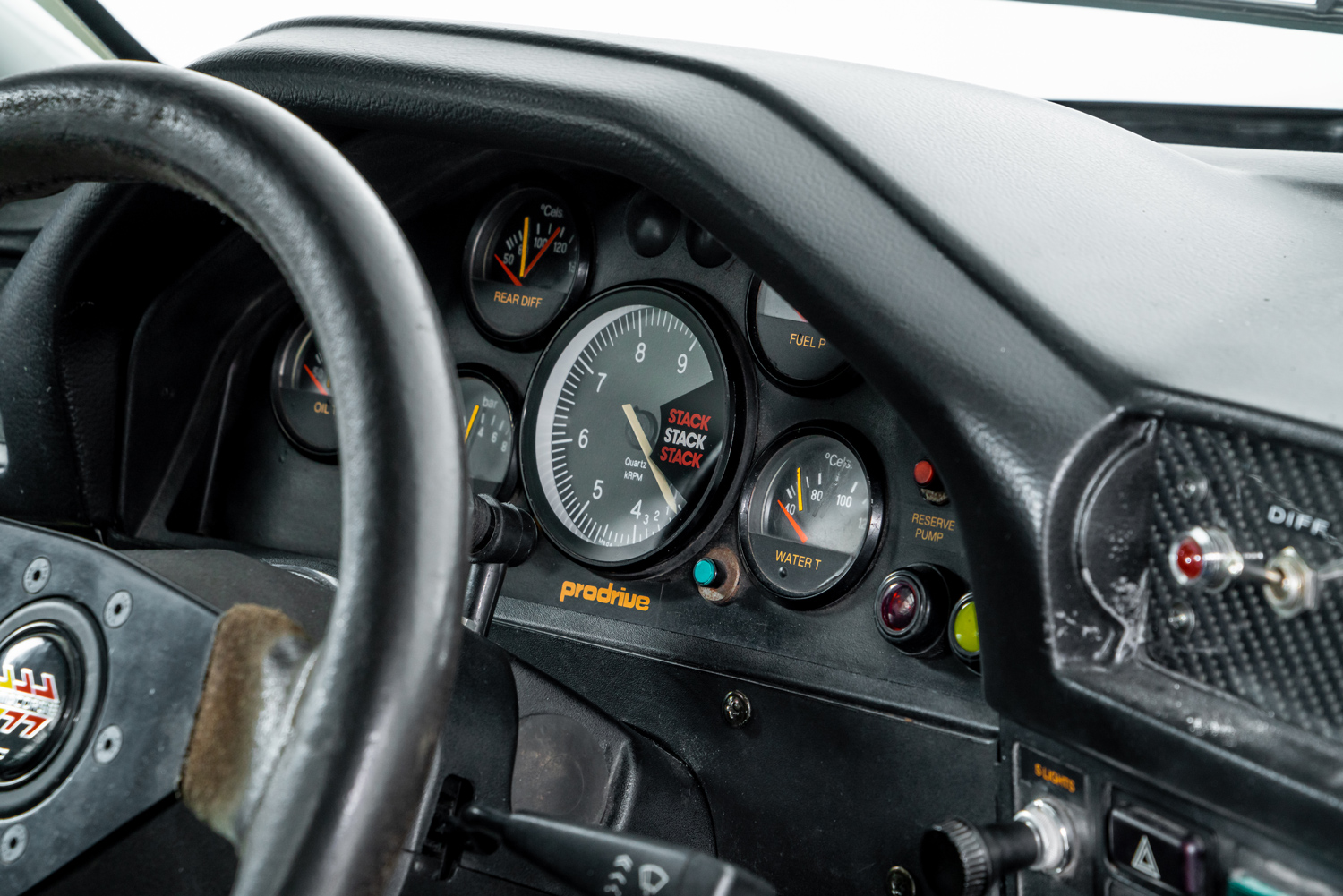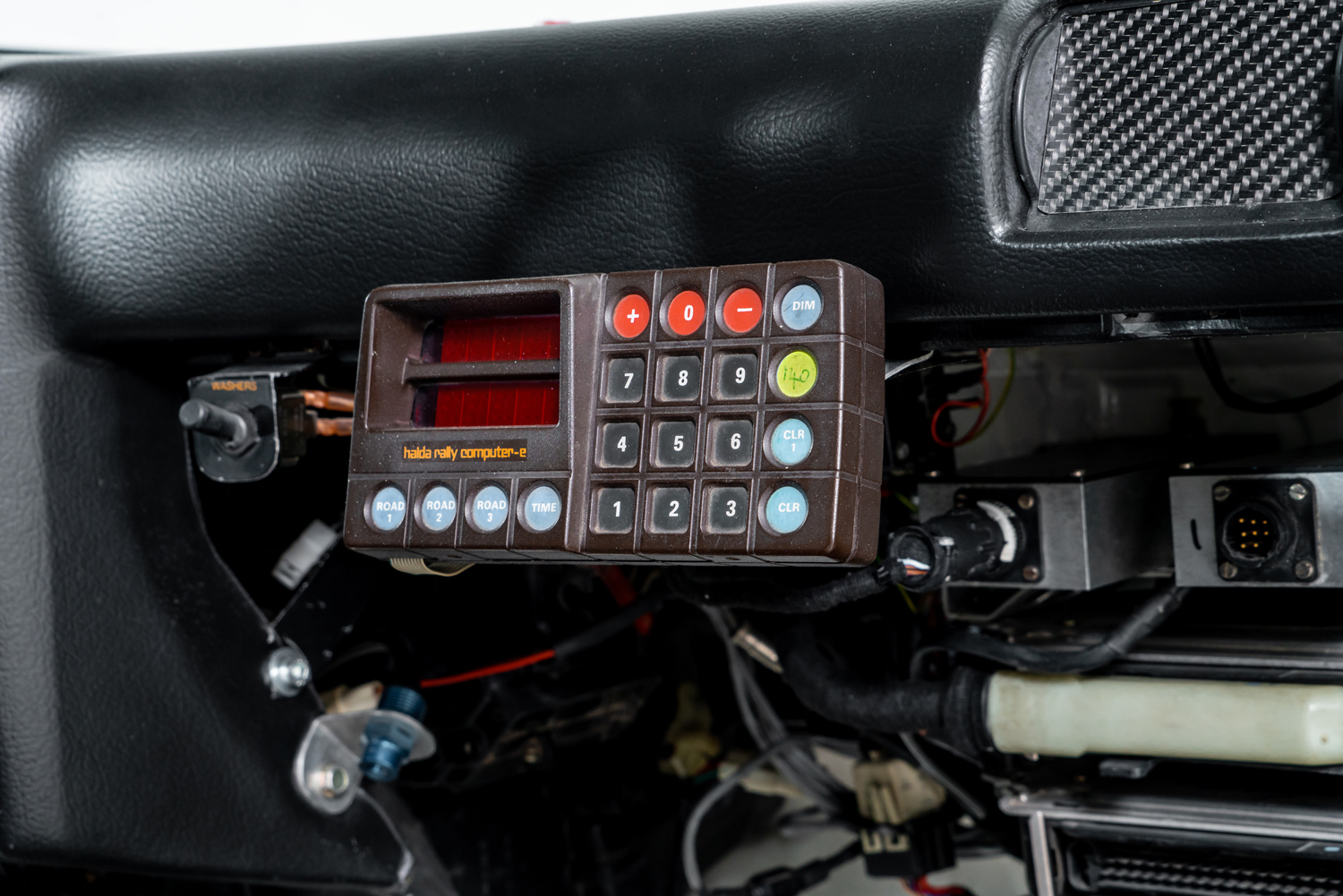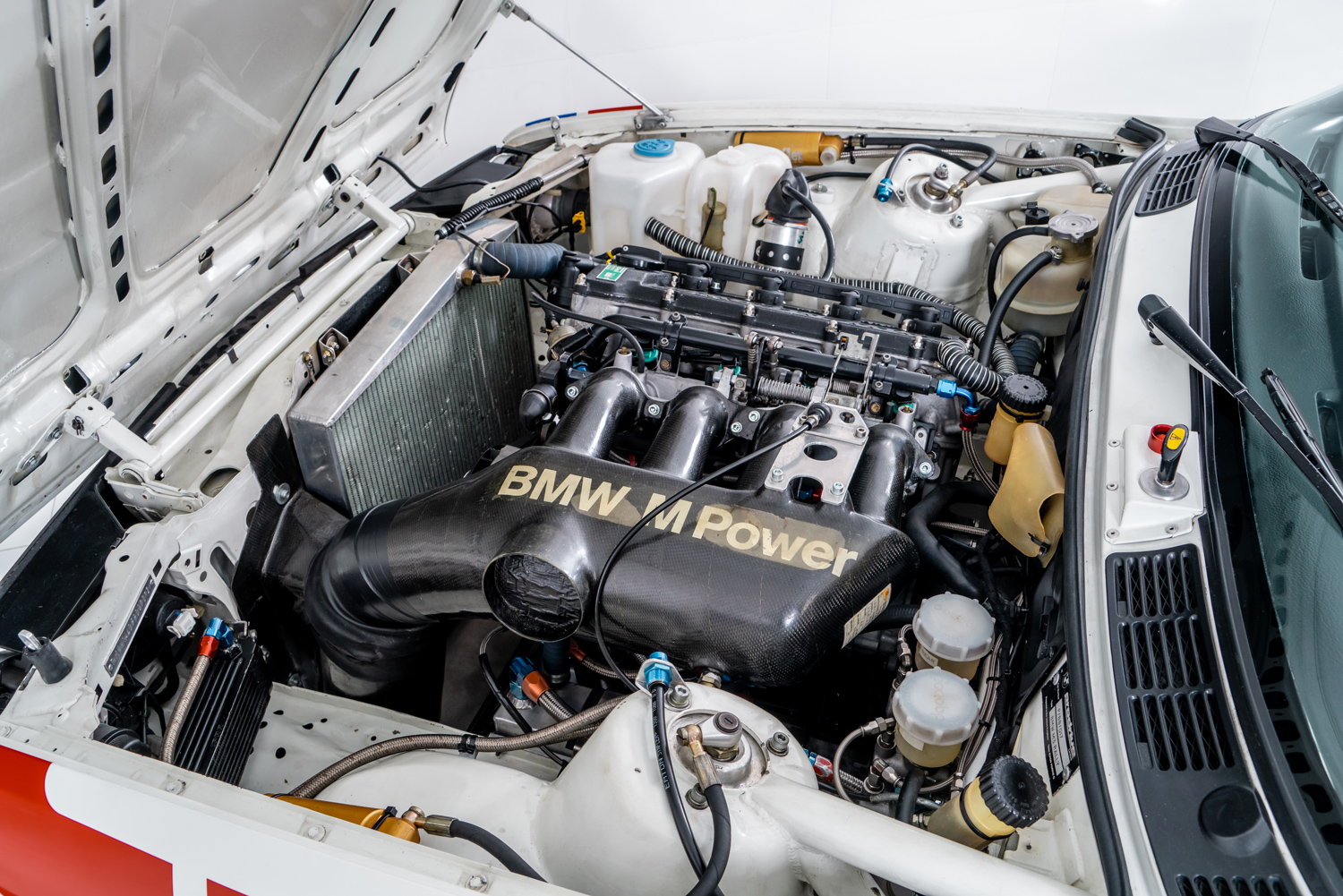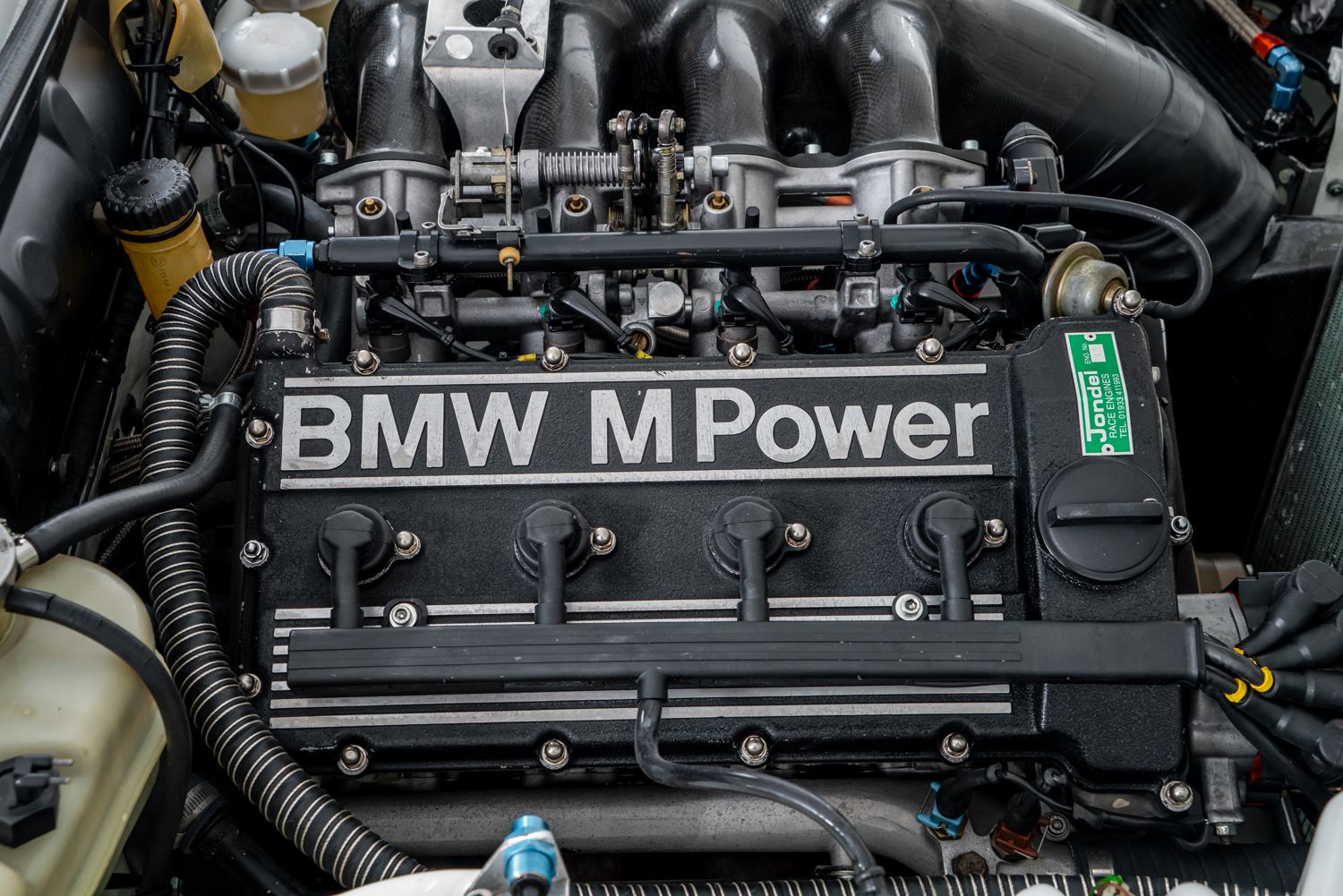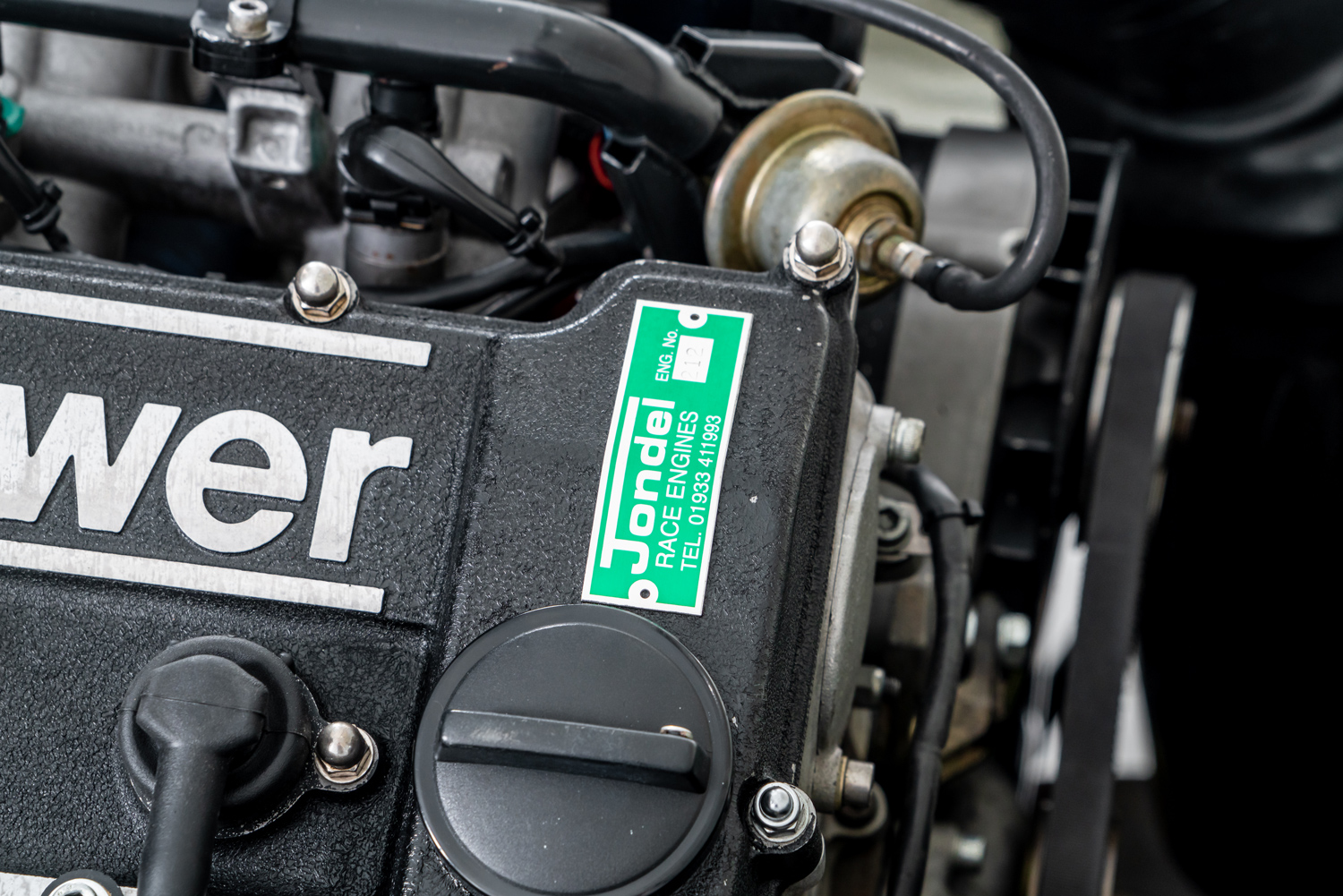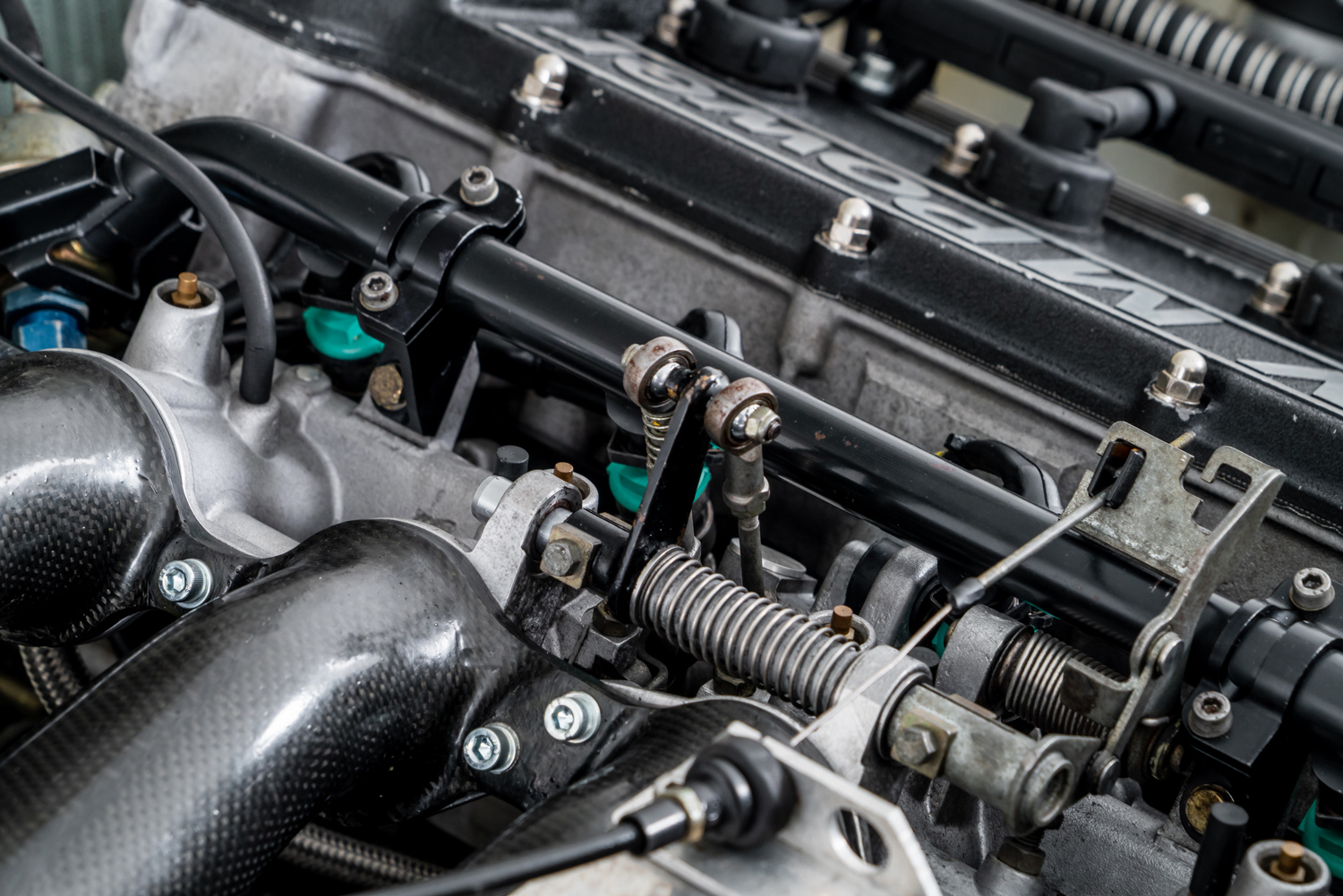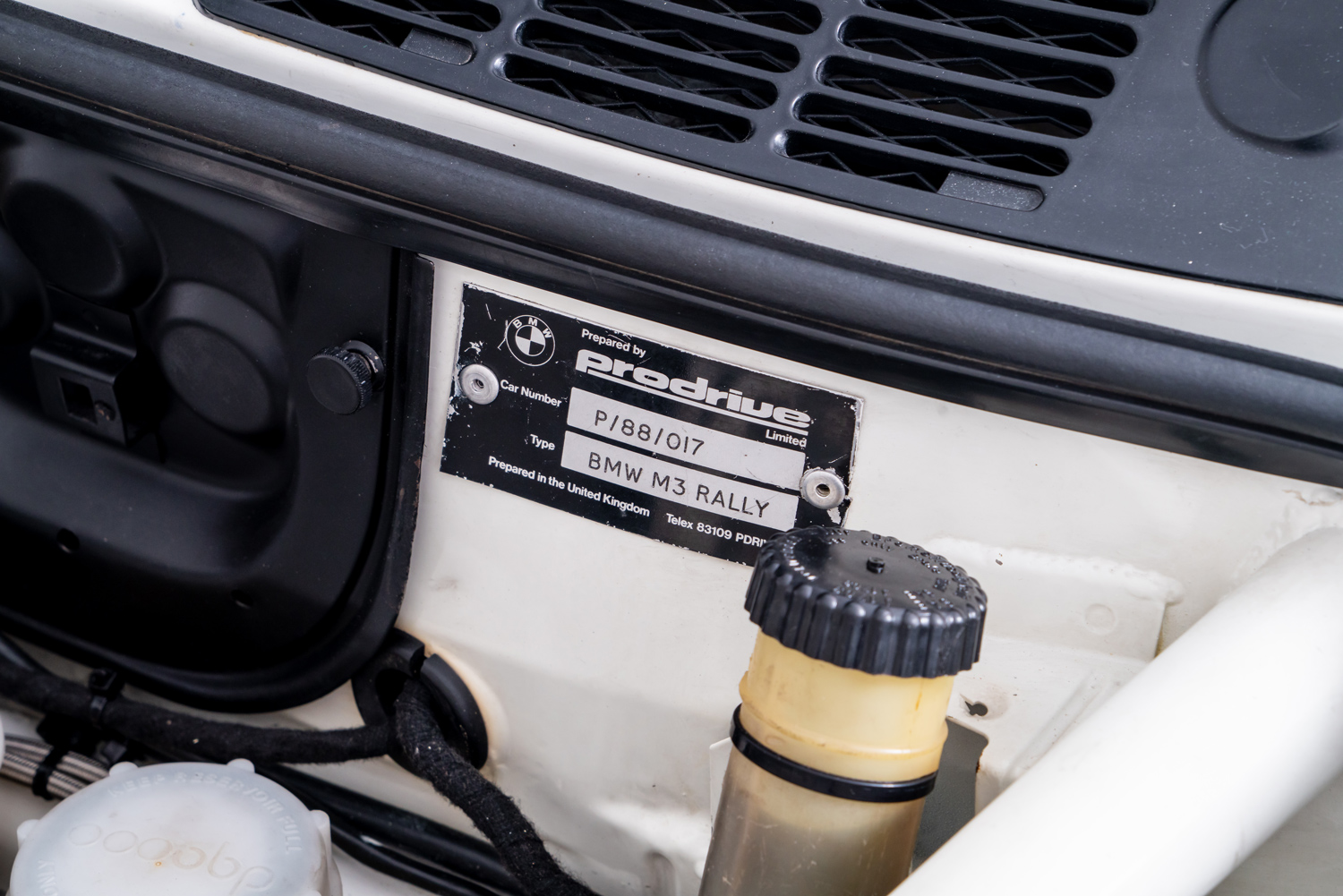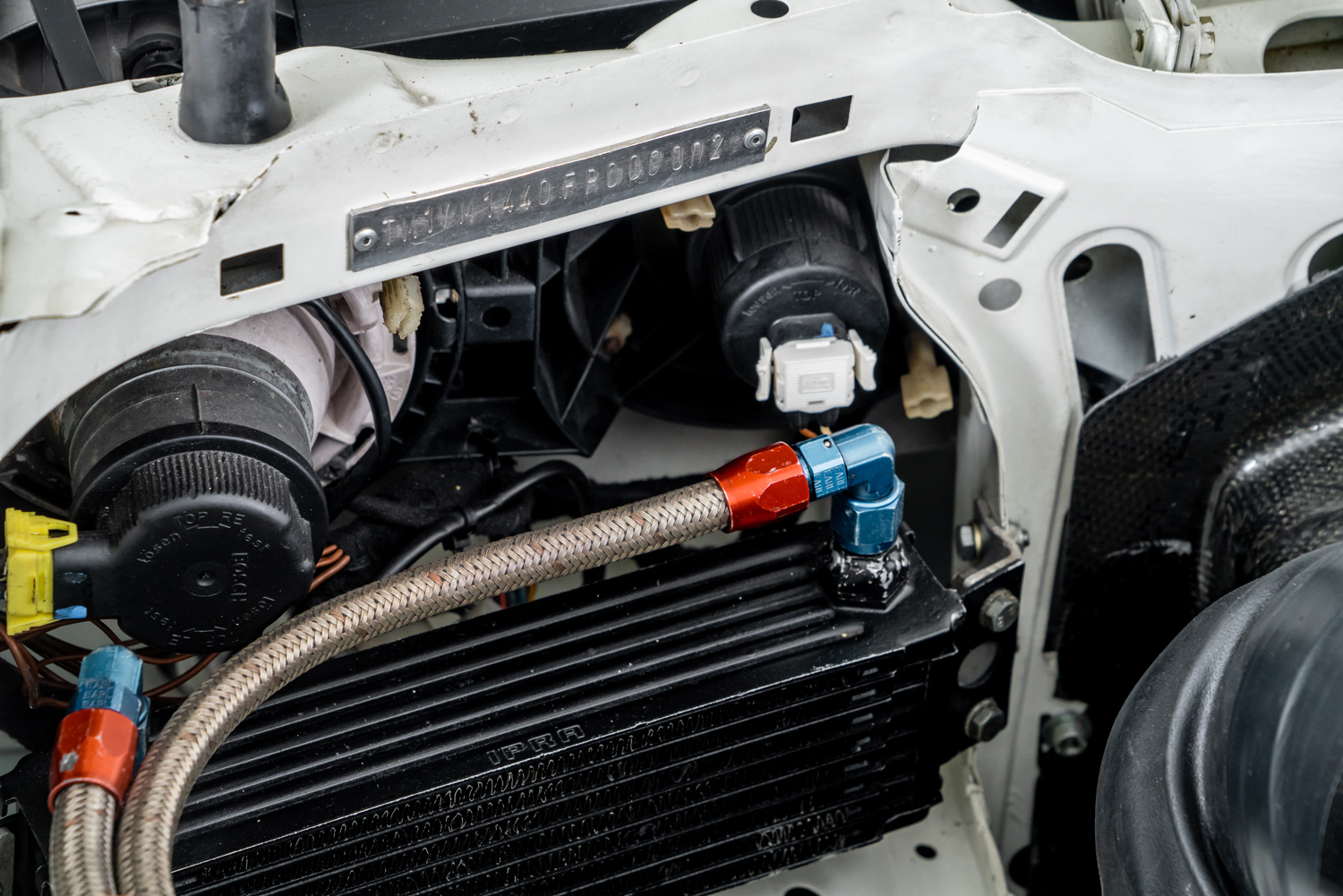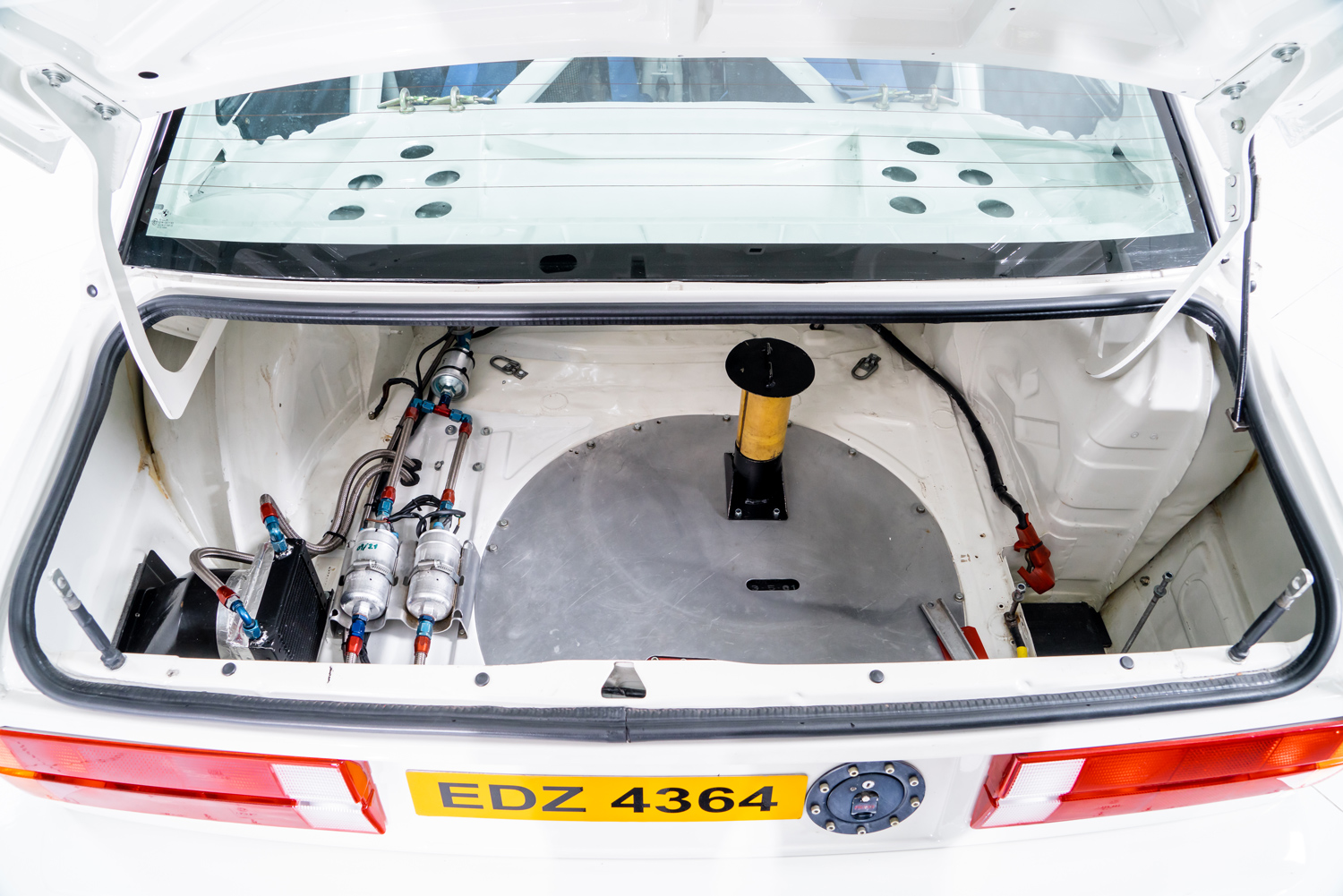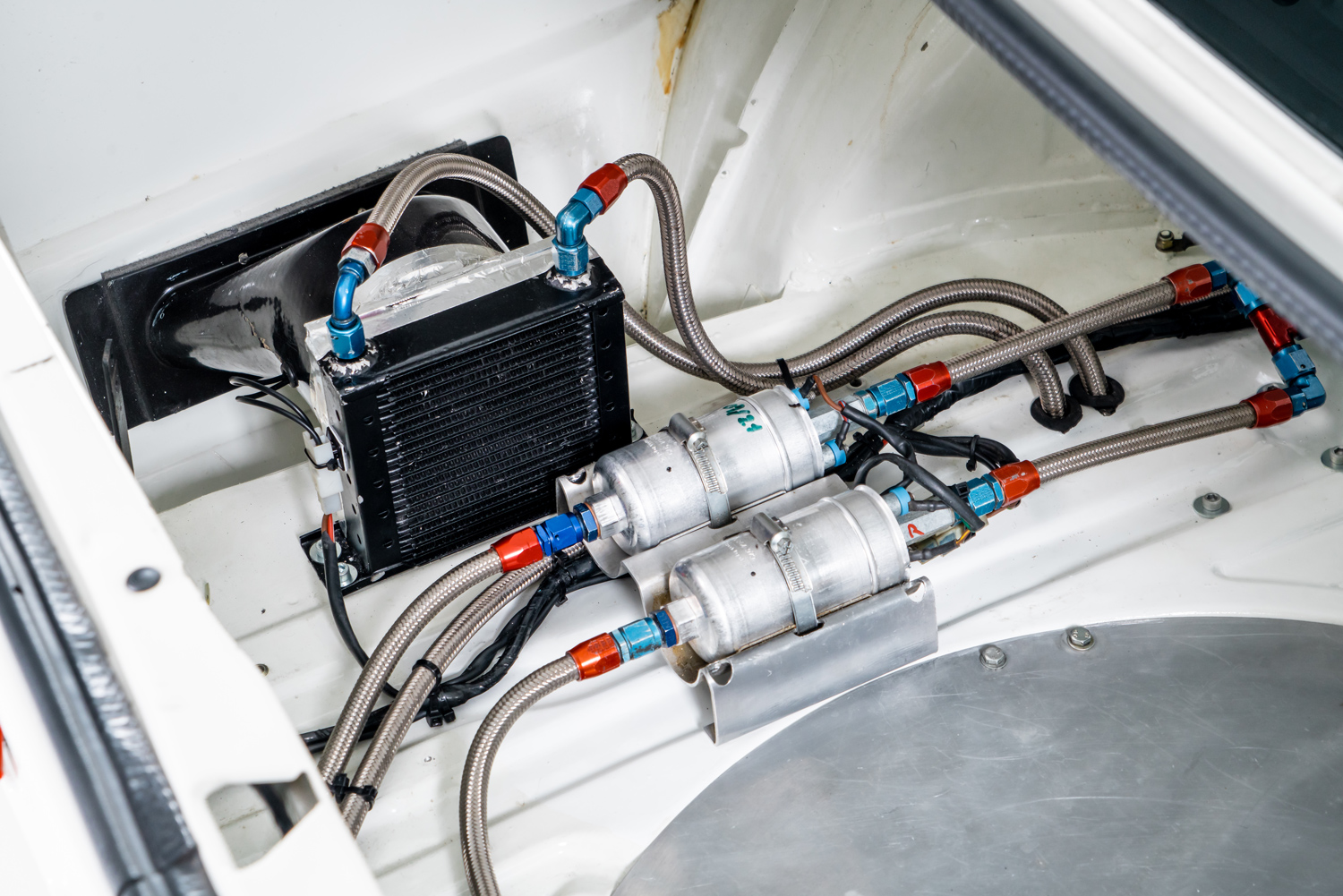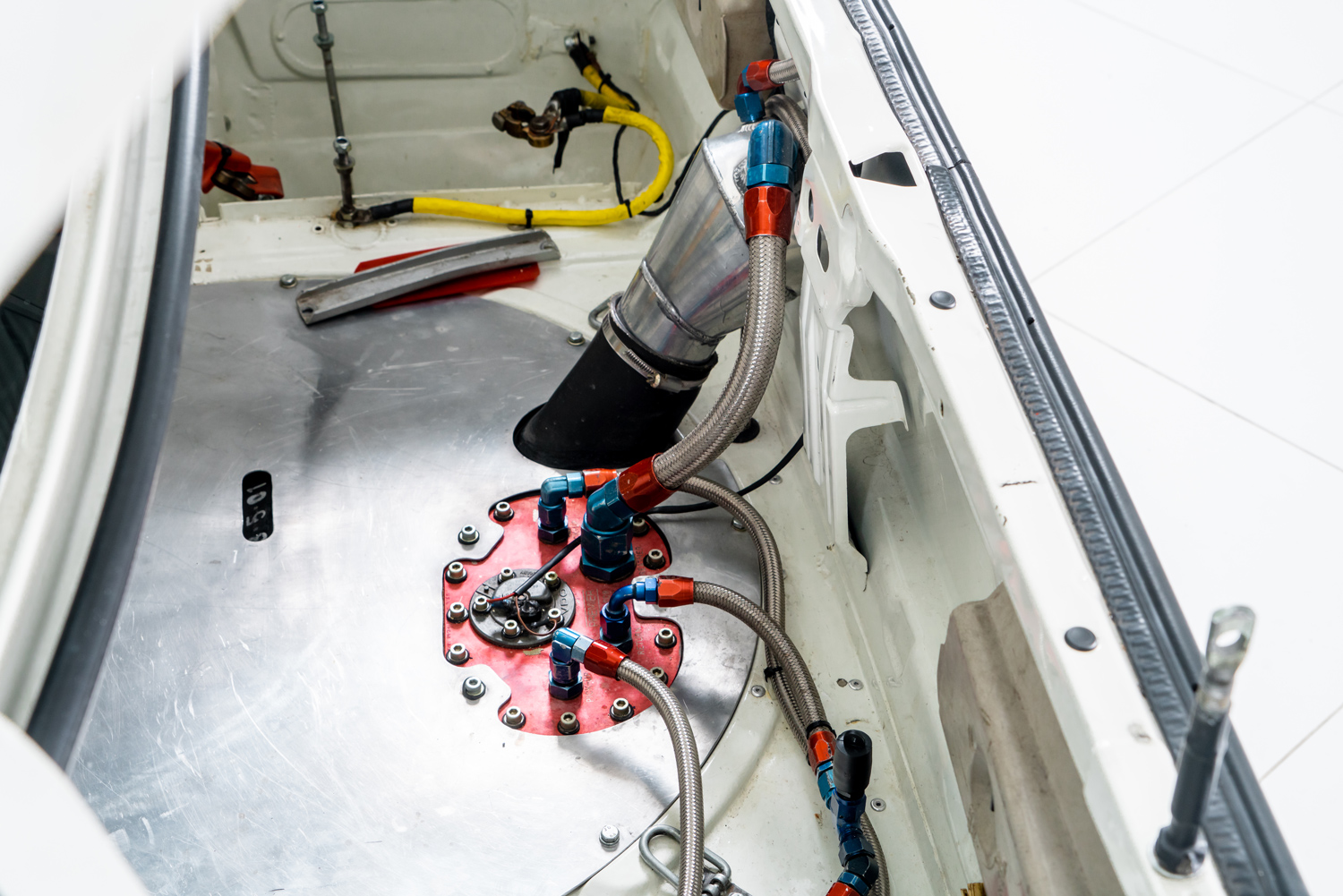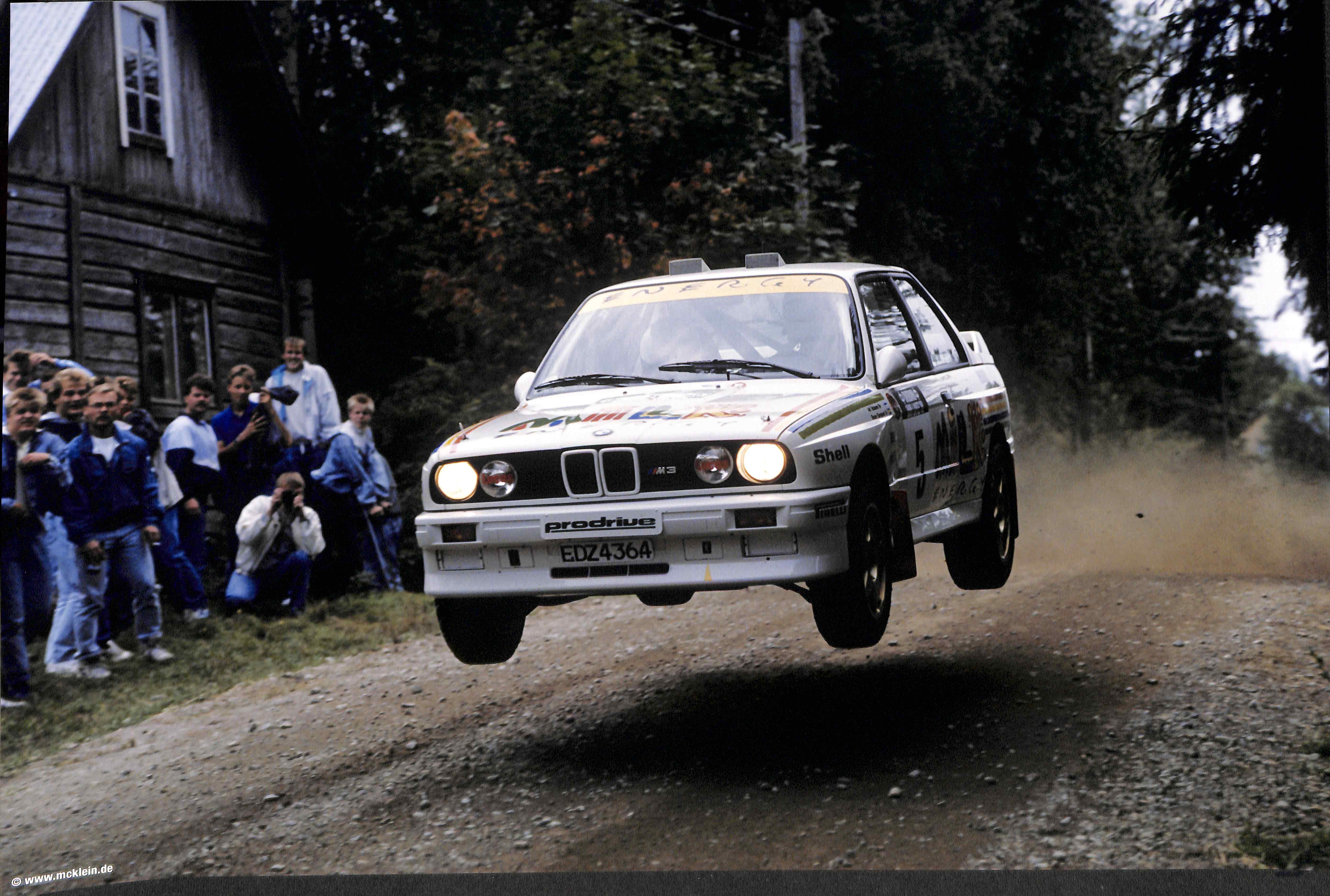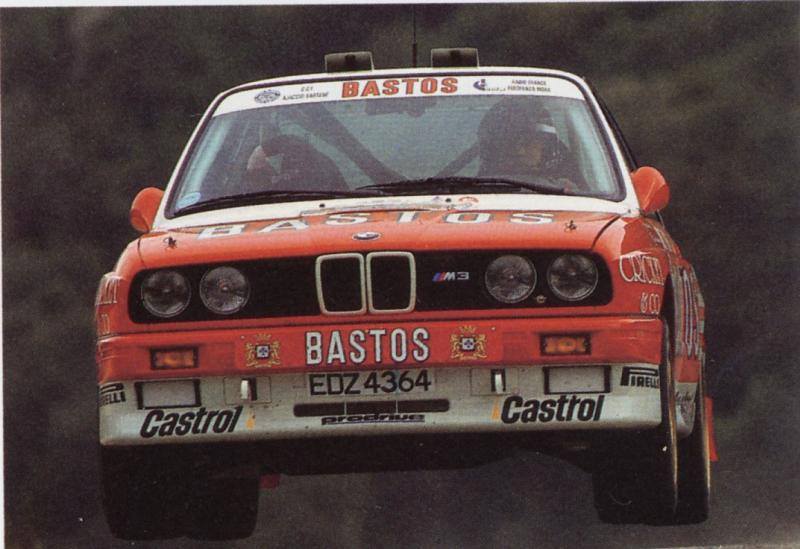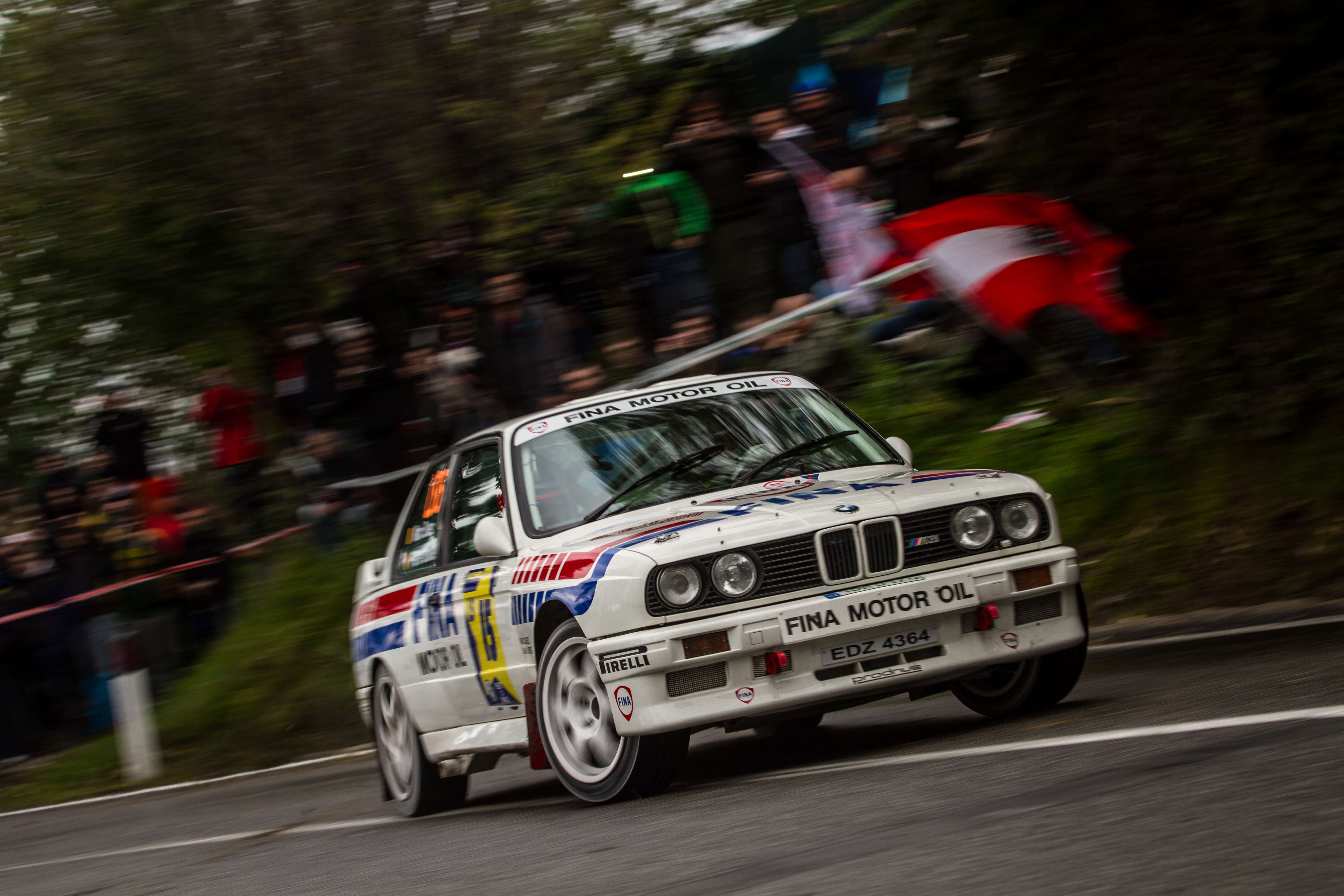MODEL HISTORY
The BMW M3 Prodrive is based on a Group A vehicle, which was originally developed by BMW Motorsport for circuit racing, from which a civilian version was derived, which contained all the parameters, that had to be shared between the racing and road models according to the rules of that time. This applies to the dimensions of the cars, important chassis and engine components, as well as the aerokit.
As the name suggests, this derivative was manufactured by the English company Prodrive, based in Banbury, for rally racing. The motives for going this route were quite clear. The year was 1986, and countless troubles related to the "cosmic" class of Group B vehicles in the rally clearly showed, that the following year, these overengineered monsters would be banned. At that time, Prodrive owned 6 MG Metro 6R4 vehicles - they invested considerable funds in something, that was basically unusable from the next season. David Richards, head of Prodrive, began looking for a project for the next few years, and since Group A, a more civilian rally cars than the Group B, had lived in rallies and circuits for some time, and they were supposed to be the future of rally, he turned his attention to them. Since they had only three-quarters of a year for a start of the project, negotiating, building and testing the race car, Prodrive naturally hunted in the waters of already homologated vehicles, even if not actively competing in a rally.
One of the first candidates for a project car was BMW because of their promising project with the M3. However, it had one understandable disadvantage - it only had a rear-wheel drive. At first, the agreements were not the easiest - the plan to push for the homologation of the M3 variant with an all-wheel drive was quickly swept off the table. Moreover, BMW was not very attracted to the idea of dirty and beaten cars with their emblem on the hood. However, the discussions turned out to be quite successful in the end. BMW chose the same strategy as for the circuit races - it provided Prodrive with technical information and support, but the team had to take care of the operation itself. Since, without all-wheel drive, the car could have never been particularly successful on gravel, the strategy of building a car successful in local championships with a predominance of tarmac surfaces and with the support of local BMW dealerships was chosen. This also suited the titular sponsors of Prodrive - the cigarette colossus Rothmans.
Of course, the circuit variant could not be put immediately at the start of the special stage of rally, as it may require a slower, but in all respects more versatile, car. The changes thus concerned the engine, which lost its peak power, by changing the camshafts and mapping, but gained more flexibility in the lower speed range. The initial variants reached an output of 275 hp, but, in the last specifications, it climbed up to 295 hp (the circuit variant in the top specification had 320 hp). The Prodrive engine was originally overhauled by BMW itself and decided to make its own modifications and repairs at a later stage of the project. Changes also took place in the transmission - originally, a five-speed Getrag 265 with a shorter final gear was used, but it was later replaced by a six-speed transmission of their own design.
The car body also had to be modified. To everyone's surprise, the standard M3 was already very rigid, which was further enhanced by the roll cage. Bodies for BMW racing cars were then supplied by the French company Matter, which produced bodies for the M3 circuit versions. However, again, the frame met the circuit specifications and did not fully consider the use of a second seat in the car. The tank in the car was also scaled down, as rally races allow more frequent refueling.
Major changes had to take place on the car's chassis. Bilstein circuit shock absorbers did not allow proper lifts, so the manufacturer, in cooperation with Prodrive, developed a new rally variant. The changes also affected the brakes - the massive front brakes were scaled down, while the rear brakes were enlarged. The reason is simple - a more balanced distribution of the braking effect between the axles is very beneficial with frequent changes in the adhesion of surfaces, which, logically, is not taken into account on the circuits. Another change concerned the central wheel nuts - they are very practical on the circuits, as they allow very fast wheel replacement in the pits. However, this replacement takes place with pneumatic guns, which deal with great forces and torques. The problem with this solution occurs at the moment of a standard wheel change with a wrench. The required torque for the disassembly is not easy to achieve and, due to the frequency of defects, and the associated possible wheel changes directly at the special stage, this would be a significant complication. The special tool would add weight to the car, which, of course, everyone resists.
The first circuit special reached Banbury in December 1986, with the first rally race with French driver Bernard Béguin scheduled for March 1987 - the deadline was suicidal. The advantage of Prodrive's cooperation with BMW was the fact that as soon as someone approached BMW Motorsport with a request for parts in the rally specification, this request was automatically forwarded to Prodrive.
The first race of the car was the March Rallye des Garrigues in France with the aforementioned Bernard Béguin behind the wheel. Although the premiere failed completely, as the car retired due to a fault in the electrical installation, the second start ended in third place and the third with a victory in the French championship. Meanwhile, the M3 duo, prepared by Prodrive, completed the start at the Circuit of Ireland. There, there was a problem with both cars with fuel pumps, which, according to initial notes, stopped distributing fuel in sharp left-hand turns. Before the important highlight of the season, the Corsican Tour de Corse, the team had a challenge to eliminate this flaw in the design. It was the turn of Malcolm Wilson, the current manager and owner of M-Sport, which is building rally and rallycross specials from Ford (and the circuit Bentleys), to simulate similar conditions in which the problem occurred.
The team left for the Tour de Corse without these technical difficulties. This race was extremely important for the project, because in addition to part of the French championship, it was also a World Championship race. There was a lot of competition at the start, but due to the fact, that the track had a tarmac surface with the traditional characteristic "corner to corner", M3 could think of the highest places. In the starting list, Prodrive had two drivers - in addition to the local Béguin, they recruited the Belgian Marc Duez. From the very beginning, Béguin took the lead in the race, but the situation was complicated by the rain, which played into the note of the factory all-wheel drive Lancia Delta Integrale. However, with the track drying up, Béguin started to get on top again, and even the faster, but flawed, Jean Ragnotti with the factory front-wheel drive Renault 11 Turbo could not change that. The first start in the World Championship meant the first victory for M3, which meant great advertising for the whole project. It is a bit strange, that BMW itself was not as excited by this news.
Thanks to promising results, Béguin took second place overall in the 1987 in French championship. Duez was not so successful in Belgium and finished 8th.
The 1988 season also brought absolute titles. Patrick Snijers, who went to Manx for the victory during the season, won the Belgian title. Béguin repeated the overall second place in France behind Auriol with his direct competitor - Ford Sierra RS Cosworth - and François Chatriot, formerly starting with the Renault 11 Turbo, was also very successful in the same championship, winning fourth overall place. In Italy, Andrea Zanussi was also very successful with the M3.
The year 1989 was a championship for Chatriot in France and Duez in Belgium, yet it was clear in the start lists that the bag was torn with all-wheel drive cars and once their initial flaws were removed, there would be little chance of competing with the rear-wheel drive alone. This was confirmed the following year, when Chatriot repeated his triumph in France, but the Belgian drivers, known from the M3 cockpit, were already piloting all-wheel drive cars and the very fast Grégoire de Mevius was only in fifth place total.
The year 1990 itself also marked the end of the M3 as their primary rally project for Prodrive. Great results came from working with a Japanese carmaker specializing in all-wheel drive cars, which wanted to make its products visible in the World Cup. This gave birth to perhaps the most famous era of this company from Oxfordshire. The carmaker was Subaru.
A total of 11 competition M3s were built, of which 3 in gravel specifications, but these cars were also used on tarmac. They differ, among other things, by the double floor and the special rubber coating of the floor and lower arms, which is also the case with our car. According to the available information, at least one of these three cars no longer exists. There are a maximum of two original pieces left in the world, including the car owned by our company.
OUR CAR
Our car was used by driver Marc Duez in the World Rally Championship throughout the 1989 season and this campaign is well documented. In the following years, it was sold to Northern Ireland and there, it was rebuilt to right-hand drive. Then it traveled to Belgium, it was returned to his original configuration, from where our company bought it in April 2013 for our collection. The car underwent a historical audit by Prodrive, where its originality was successfully verified, and Paul Howarth, a Prodrive expert on their historic cars, issued an evaluation report.
The car has an extensive documentation regarding its history, including a book specially published about it.
In 2015,
Marc Duez got behind the wheel of his former car again at the Rally Legend San Marino and enjoyed the M3 again.
In addition to Duez, Ari Vatanen also started with the car in 1988 during the World Championship in Finland. However, he ended his race in the ravine.

